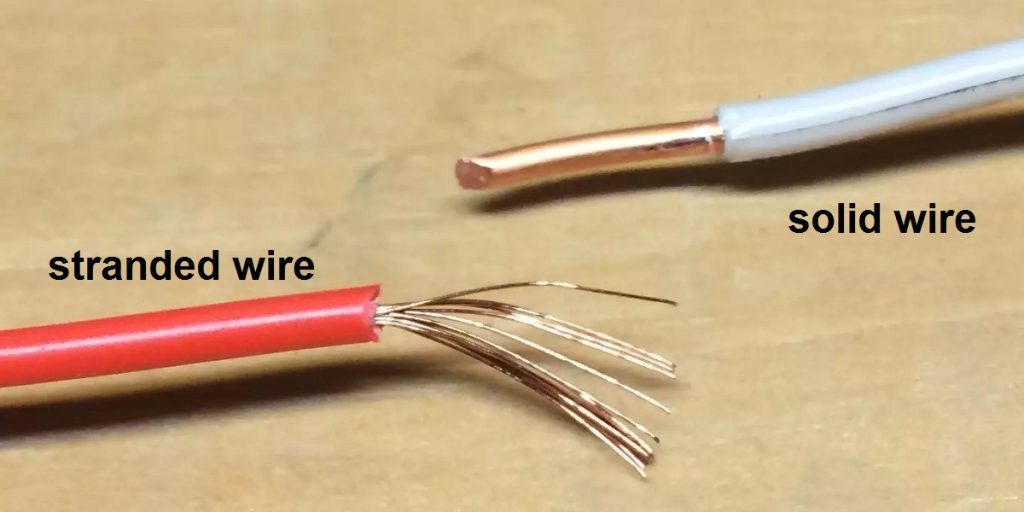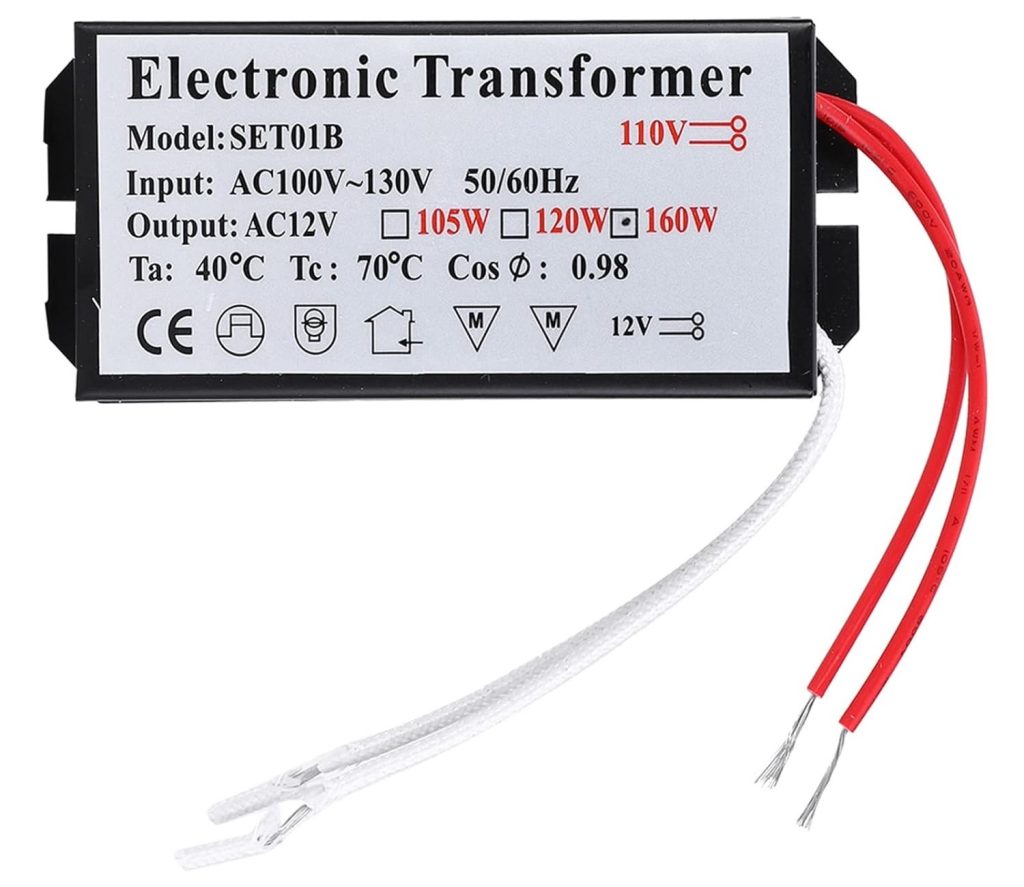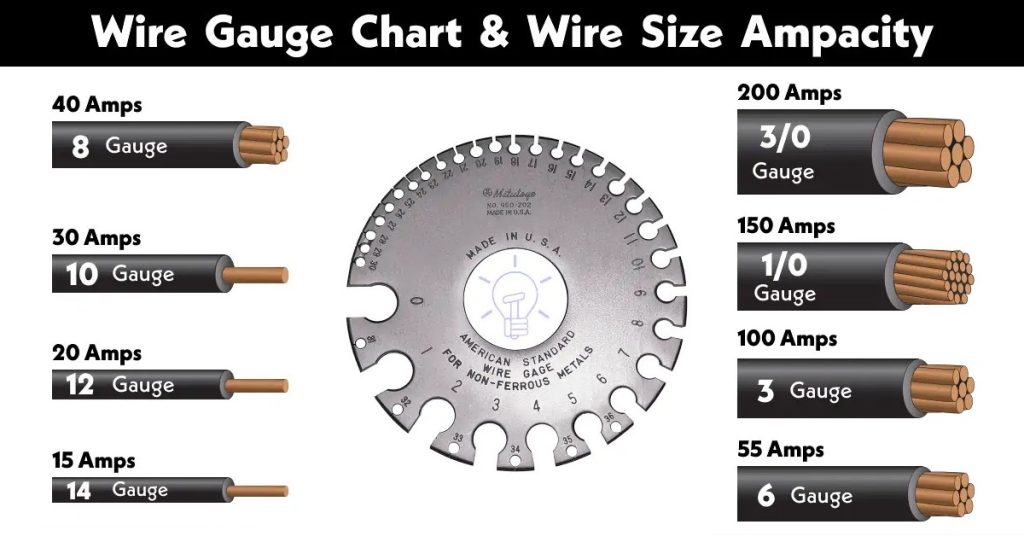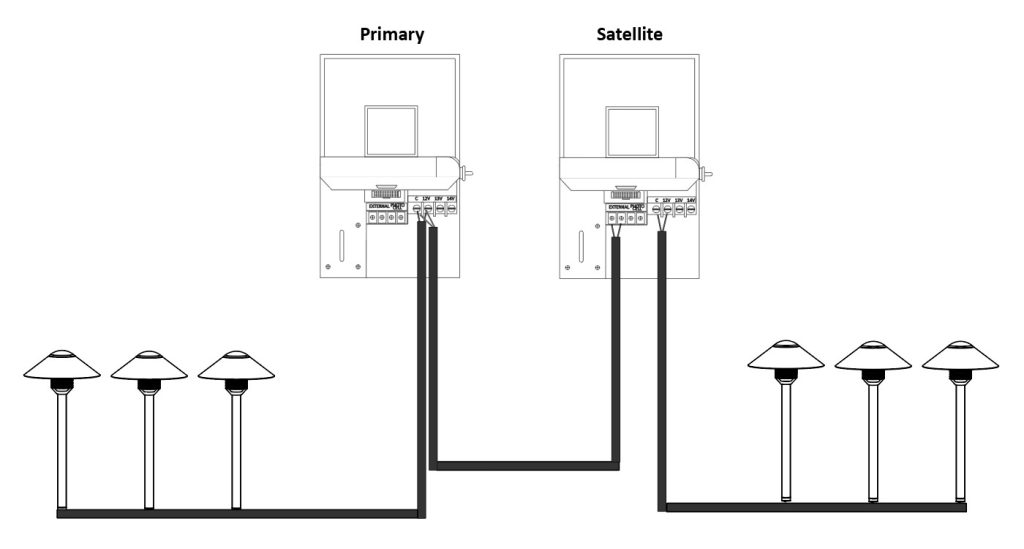Maximizing Distance: Low-Voltage Landscape Lighting Wire Guide
An Enlightening Introduction to Landscape Lighting
The enchanting aesthetics of landscape lighting can beguile any observer. It is an art form that combines creativity and technical knowledge, transforming outdoor spaces into captivating scenes of beauty during the night’s solemnity. Landscape lighting serves multiple purposes, from enhancing the architectural features of buildings and illuminating pathways for safety to highlighting beautiful garden elements and creating an ambiance for outdoor events.
Yet, behind these radiant displays lies a complex network of electrical configurations that need meticulous planning and execution. Among these components, one often overlooked but crucial aspect is the wiring, specifically low-voltage wire networks used in landscape lighting.
The Critical Role of Voltage in Landscape Lighting
Voltage is the propelling force that ensures electrical energy traverses from the power source to the lighting fixtures scattered across a landscape. It’s akin to water pressure in a pipe; without appropriate voltage levels, lights will falter or fail altogether.
Low-voltage landscape lighting typically operates at 12 volts – significantly less than the standard household voltage level of 120 volts. This decreased level contributes not only to energy efficiency but also to safety considerations when installing or adjusting outdoor lights, as lower voltage reduces risks associated with electrical mishaps.
When planning a landscape lighting design, understanding voltage dynamics becomes paramount due to its direct influence on the functionality and performance of lights. If inaccurately estimated or wrongly implemented, landscapes risk being poorly lit or overwhelmed by excessive brightness.
In low-voltage systems such as those used for landscape lighting, wire length plays a critical role in maintaining optimal voltage levels at each light fixture along its route. Misjudging this distance can lead to unfortunate phenomena such as ‘voltage drop’ – a reduction in power that causes lights at one end of a circuit (usually further away from the transformer) to be dimmer than those near it.
Knowledge about how far low-voltage wires can run is thus essential in creating an evenly illuminated landscape, ensuring every light fixture shines with its intended luminosity and color accuracy. Understanding this element of landscape lighting design will equip us with the means to create enchanting spaces that not only look appealing but also function efficiently and safely.
Understanding Low-Voltage Wire for Landscape Lighting
Defining Low-Voltage Wire
The concept of low-voltage wire in the context of landscape lighting commences with an understanding of voltage, a fundamental parameter in electricity that measures the potential energy between two points. The term ‘low-voltage’ itself is somewhat flexible, but typically it refers to an electrical charge that falls under 50 volts when considering alternating current (AC) and a meager 120 volts for direct current (DC). In simple terms, low-voltage wires convey a lower amount of electrical energy as compared to their high-voltage counterparts.
When we speak specifically about landscape lighting, it typically employs small devices that require less power to function optimally. Thus, the usage of low-voltage wires becomes a natural choice for such setups. These wires are designed to carry voltage from the power source or transformer to light fixtures nestled within your landscaped spaces without causing any significant power loss or safety concerns.
A noteworthy advantage of low-voltage wiring is its inherent safety feature. As these wires transport less electrical energy, they pose a minimal risk of electric shock or other electricity-related hazards. This characteristic allows homeowners and landscaping professionals alike to install and maintain these systems effortlessly and safely.
In addition, using low-voltage wire reduces energy consumption, making them environmentally friendly and cost-effective options. With their lower power requirements, these wires also make it feasible for users to explore solar-powered options where possible.
Last but not least, low-voltage wire systems offer flexibility in design and placement, which high-voltage systems can lack due to rigid safety standards around installation locations and methods. The possibility to easily modify or expand your landscape lighting becomes viable with this type of wiring solution.
Varieties and Characteristics of Low-Voltage Wires Used in Landscape Lighting
Moving onto the varieties of low-voltage wires designed for landscape lighting, it is essential to clarify that although they may appear similar on the surface, subtle differences exist. These differences primarily arise from their unique characteristics, which define their suitability for specific applications.
One of the most commonly used types is the stranded wire. Known for its flexibility and durability, a stranded wire consists of several smaller wires bundled together. Its structure permits bending and manipulation without risk of breakage or damage; this makes it ideal for outdoor applications where wiring may need to navigate around garden features or contours in the land.

Another variant is the solid-core wire, made up of a single, thick wire rather than multiple strands. This type offers more resistance against voltage drop over extended distances than stranded variants. However, its inherent rigidity makes it less forgiving when twisted or bent excessively.
Besides these two major types of low-voltage wires, others, like coaxial cable or twisted pair cables, serve specialized uses within landscape lighting setups. The coaxial cable comes with an interior insulating layer that helps prevent signal interference – an attribute making it suitable for controlling advanced lighting systems remotely.
In terms of gauge (thickness) and insulation level – two prime factors determining a wire’s capacity – landscape lights generally use 12 to 16 gauge wires coated with plastic insulation. Thicker wires (lower gauge numbers) can carry power over longer distances and are generally more robust but come with a higher cost tag.
Understanding these various types and characteristics can greatly assist homeowners and professionals alike in choosing the right low-voltage wiring solution for their distinctive landscape lighting needs – ultimately enabling them to create beautifully lit outdoor spaces that are both safe and efficient.
Factors Influencing the Distance for Running Low-Voltage Wire
Gauge of the Wire: An Essential Aspect
Understanding the gauge of a wire is paramount to determining its maximum running distance in landscape lighting. The term ‘gauge’ refers to the thickness or diameter of a wire, expressed numerically and inversely related to its size: higher gauge values represent thinner wires and vice versa.
The gauge directly impacts the resistance encountered during current flow, which subsequently dictates how far electricity can be efficiently transmitted along this conduit. When dealing with low-voltage landscape lighting, it’s important to note that different gauges are suitable for varied distances.
For instance, 12-gauge wires are typically used for runs up to 100 feet, while 10-gauge wires can handle runs up to 200 feet. Yet more substantive, 8-gauge wires have an impressive tolerance spanning up to a whopping 400 feet.
Voltage Drop: A Power Drainer
Voltage drop is another critical factor that significantly influences low-voltage wire’s running distance. In simplistic terms, voltage drop is the decrease in electrical potential as electricity travels along a wire from its source (transformer) to its terminal (light fixture).
This decrease is primarily caused by resistance encountered due to factors such as wire length, diameter (gauge), and material composition. A substantial voltage drop across your landscape lighting circuit could lead to dim or flickering lights – a surefire sign of inefficient power transmission.
Consider this scenario: if your transformer is rated at 12 volts but we measure only 9 volts at our light fixture due to a significant voltage drop, the resultant light output will be noticeably diminished. Hence, comprehending and managing voltage drop is integral for optimal operation over longer distances.
Power Source and Transformer Capacity: Foundations of Transmission Efficiency
The very source fueling your landscape lighting – the power source and transformer capacity – plays a defining role in determining the maximum feasible cable length. Power sources range from common household electricity supply to specialized solar panels and batteries, each offering different voltage levels. The chosen power source must be compatible with your lighting fixtures and wiring system, ensuring efficient transmission over longer distances.

Transformer capacity, measured in watts (W), signifies the maximum load that can be sustained by a transformer. For example, if you have ten 20W light fixtures connected along a single wire run, you’ll require a transformer with at least 200W capacity.
Overloading beyond a transformer’s rated capacity could lead to voltage drops, resulting in decreased performance or even damage to your lighting system. Understanding these factors – wire gauge with all its intricacies of thickness and resistance, voltage drop that stealthily diminishes light output, and the pivotal roles of power source compatibility and appropriate transformer capacity selection – equips us better towards maximizing low-voltage wire distance for landscape lighting.
Calculating Maximum Distance for Running Low-Voltage Wire: A Step-by-Step Guide
Gathering Necessary Data: The Prerequisite of Precise Calculation
Before embarking on the calculation of the maximum distance that a low-voltage wire can run, it is crucial to gather the necessary data. This data revolves around three fundamental variables: the gauge of your wire, the wattage capacity of your transformer, and the total wattage of your landscape lights.
The first piece of data you need is your wire’s gauge. Wire gauge refers to the thickness or diameter of your wire, typically measured in American Wire Gauge (AWG). This diameter significantly impacts how far electricity can effectively travel through a wire. Thicker wires (with lower AWG numbers) can conduct electricity over greater distances than thinner ones.
Next on our list is transformer wattage. In essence, a transformer’s job in landscape lighting is to reduce household current – usually 120 volts – to a safer 12 or 24 volts. Knowing how many watts your transformer can output at once directly affects how many lights you can power and hence influences how far you can run your wires.
But equally important is knowing the total wattage of your lights. Simply add up all the wattages listed on each bulb or fixture that will be part of this circuit. Without this knowledge, you risk overloading both your transformer and wiring or not providing enough power for all lights to function at their brightest.
Calculation Process: Translating Data into Maximum Distance
With all necessary information at hand, we now delve into translating these variables into a maximum transmission distance for our low-voltage wires. Although it might sound intimidating initially, fear not! All that’s required are basic mathematical operations and careful attention.
Firstly, determine if there is enough capacity in your transformer by subtracting total light wattage from the transformer’s wattage. If the result is zero or positive, your transformer can handle your lights’ load. However, if it’s negative, you may need a more substantial transformer or reduce the number of lights.
Next up comes calculating voltage drop to see how much power you will lose as electricity moves down your wire. The formula for this calculation generally takes into account factors like wire gauge, total wattage of lights, and cable length. Ideally, we should keep the voltage drop below 3% for optimal performance of lighting fixtures.
Vd = 2 x L x I x R / 1000
You can calculate the maximum distance from the voltage drop formula. Generally speaking, when we know all other variables (wire gauge, total light wattages), we can rearrange the formula to find out how far our wire can run before hitting that 3% voltage drop threshold.
L = Vd x 1000 / 2 x I x R
where Vd is the voltage drop, I is the current, and R is the resistance of the AWG wire.
Indeed, these calculations might seem a bit complex at first glance; however, they are vital steps in planning an efficient low-voltage landscape lighting system. With this analytical toolset at your disposal and careful attention to detail, you’ll be well on your way to lighting your landscape safely and effectively.
Charting the Course: Choosing the Right Gauge Wire
The selection of an appropriate gauge for your low-voltage wire is pivotal to optimizing its running distance. The wire’s gauge refers to its physical thickness. A lower gauge translates to a thicker wire, which permits higher electrical current flow and facilitates longer distances.
When selecting the right gauge, one should be cognizant of their individual requirements. This involves understanding the maximum wattage being used by your lighting fixtures and how far apart they are from your power source. For most residential landscape lighting applications, 12 or 16 gauge wires are commonly used due to their balance between capacity and flexibility.

Nevertheless, if one is contemplating an extensive layout with multiple fixtures spread out over a substantial distance, it might be prudent to opt for a lower gauge wire, such as 10 or 8 gauge. These heavier gauges can carry power more efficiently over long runs, which helps in maintaining consistent brightness amongst all fixtures.
Yet, one must remember that using heavier gauges increases costs and can sometimes make installation more challenging due to their increased rigidity. Therefore, careful planning and assessment of specific needs is paramount in choosing the most suitable wire gauge that strikes a balance between efficiency and expense.
Treading Lightly: Proper Installation Techniques
The harbinger of optimal performance in landscape lighting is proper installation techniques. Incorrect practices can result in voltage drop – an undesirable phenomenon wherein light intensity diminishes with increasing distance from the power source.
One effective technique to circumvent voltage drop includes wiring your lights in parallel rather than in series. This configuration ensures each light receives full voltage from the transformer since each fixture has its own dedicated path back to the power source.
Another beneficial practice pertains to equitable distribution of lights along your low-voltage cable run – concentrating too many lights at either end could result in uneven brightness due to differing loads on the circuit at various points. A uniform spread will ensure more consistent lighting throughout your landscape.
Furthermore, maintaining a central location for your power source or transformer can be beneficial in minimizing the distance of wire runs leading to each fixture. This balanced layout aids in mitigating voltage drop and facilitates evenly distributed lighting.
One should also consider burying low-voltage cables to protect them from physical damage, using a depth of 6 inches as a general rule of thumb. However, always remember to check state and local codes before proceeding with any digging or installation work.
Multiplicity in Power: The Case for Multiple Transformers
When contemplating extensive landscape lighting ventures that span vast distances, the utilization of multiple transformers can prove highly advantageous. Since a transformer’s capacity is finite, its ability to provide adequate voltage over long distances might be hindered. Using more than one transformer allows you to create separate zones within your landscape lighting setup.
Each zone can then operate independently, which provides greater flexibility in control and can contribute towards lengthening the overall cable run by essentially resetting the maximum distance with each new transformer introduced. Remember though; it’s not only about extending wire run lengths – multiple transformers also aid in enhancing light consistency across your setup.

They serve as individual power sources that ensure adequate voltage is supplied to each fixture, leading to brighter and more evenly lit landscapes. However, employing multiple transformers may add up costs due to additional equipment and possibly require more complex wiring configurations.
Reiterating from earlier sections – the key lies in performing an intricate cost-benefit analysis based on individual needs while considering all financial implications before choosing this solution. Ultimately, maximizing running distance for low-voltage wires is inherently technical but also brimming with scope for creative strategies – from selecting suitable gauge wires tailored specifically for your needs, to implementing effective installation techniques designed to thwart voltage drop issues, even considering the use of multiple transformers when necessary.
Common Challenges When Running Long Distances with Low Voltage Wires
Dim Lights: An Illuminating Problem
The most perceptible issue that arises when low-voltage wires are run over long distances is the diminishing brightness of lights. The culprit behind this is voltage drop, an inherent electrical phenomenon where power dissipates as it travels through wire. As the distance increases, this dissipation exacerbates, leading to a significant decline in the intensity of light emitted by your landscape fixtures.
Uneven Brightness: A Dazzling Dilemma
Another frequent predicament faced when extending low-voltage wires for landscape lighting across large terrains is uneven brightness among lights. This irregularity occurs because fixtures located closer to the transformer receive a higher voltage than those positioned further away, resulting in an inconsistent lighting effect across your landscape.
Thermal Overload: A Heated Hurdle
Furthermore, running low-voltage wires over long distances can precipitate thermal overload issues in transformers. This happens due to increased electric current drawn to compensate for voltage drops along extended cables, thus provoking excessive heat generation and potential damage to transformers.
Solutions to Common Challenges in Running Long Distances with Low Voltage Wires
Higher Gauge Wire: A Bright Solution
One effective solution to address dimming and uneven brightness issues involves using a higher gauge wire for circuit runs exceeding certain lengths. Higher gauge wires have thicker diameters that reduce resistive losses and maintain proper voltage levels throughout your circuit run. While these wires may require more upfront investment, they can significantly improve lighting quality while concurrently extending your system’s lifespan.
Multifarious Transformers: An Enlightening Answer
Deploying additional transformers can be another efficacious remedy for managing challenges related to long-distance runs of low-voltage wires. By segmenting the total circuit length among multiple transformers, you can ensure a consistent supply of voltage to all fixtures, thereby obviating uneven brightness issues. This approach also reduces the load on individual transformers and mitigates the risk of thermal overload.
Parallel Wiring: A Luminous Resolution
Incorporating parallel wiring into your landscape lighting system can address many challenges accompanied by extended cable runs. By providing each light fixture with its own independent path to the transformer, this method prevents voltage drop issues that affect brightness consistency. However, executing a parallel wiring system requires careful planning and meticulous installation to maintain balance across all circuits.
Professional Consultation: A Great Recommendation
When navigating potential complexities associated with running long-distance low-voltage wires for landscape lighting, it may be prudent to consult an experienced electrical professional. Their expertise can provide invaluable insights into your specific situation and propose bespoke solutions tailored to your unique needs and preferences.
Conclusion: How Far Can We Run Low-Voltage Wire for Landscape Lighting?
One can run a low-voltage wire for landscape lighting over considerable distances, but there are several factors that must be taken into account. The gauge of the wire, the power source and its transformer capacity, and the occurrence of voltage drops have significant impacts on the maximum distance.
The ability to calculate this maximum distance accurately is an essential skill in landscape lighting design and installation. But beyond these technical aspects, it’s important to remember that landscape lighting serves a more profound purpose. It is not merely a matter of illumination but an artful play of light and shadow – a silent storyteller that can shift mood, focus attention, or bestow an ordinary garden with extraordinary beauty.
Reiteration on Navigating Challenges
Throughout our exploration of low-voltage landscape lighting wiring, we’ve encountered some potential challenges – dim lights due to long distances or uneven brightness among fixtures. These trials are not insurmountable obstacles. Instead, they provide opportunities for creativity and innovation in finding solutions.
If faced with such challenges in your landscape lighting journey, don’t be disheartened; they are common issues in this field. Remember that every problem has a solution – whether it’s using a higher gauge wire for longer runs or installing additional transformers close to light fixtures running at greater lengths.
Through learning about these scenarios and their solutions before embarking on your project, you’re equipping yourself with the knowledge needed to navigate any challenges you may encounter along your path. Let us then view these potential hurdles not as roadblocks but as stepping stones towards achieving our dream landscapes – ones bathed in just the right amount and quality of light at nightfall.
For regardless of how far we need to run our wires or how complex our designs might be, we can always find ways around issues if we have prepared correctly from the start. In the grand tapestry of landscape lighting, understanding how far we can run low-voltage wire is but one thread.
However, it’s vital one that can significantly influence the ultimate outcome of our lighting design project. Look upon it as an exciting journey into the world of landscape lighting – a realm where science meets aesthetics to create beautiful, functional, and safe outdoor spaces.
You may also be interested in the following posts:
